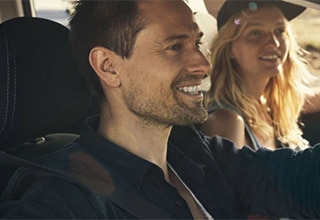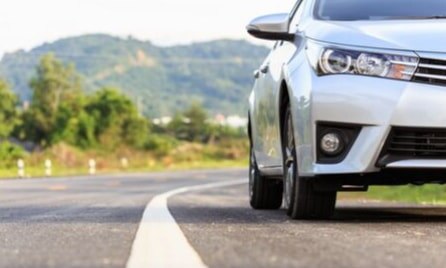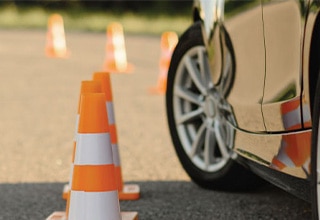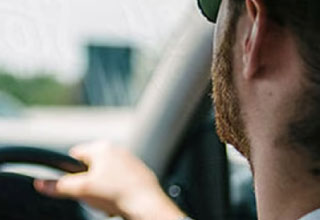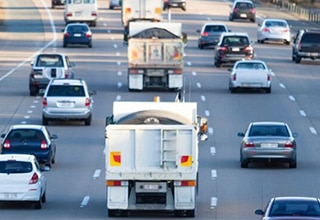- text
-
Cover and benefits are subject to eligibility criteria and terms and conditions, including the limits and exclusions of the insurance policy. Any advice provided is general only and may not be right for you. Before you purchase this product you should carefully read the Car Insurance Product Disclosure Statement and consider the Target Market Determination to decide if it is right for you.
A guide to buying a used car.
While the search for a new set of wheels is exciting, buying a used vehicle can be a little more complex than buying a new one. From how old the used car is to how many kilometres it’s travelled, there are a few things to consider on your purchase journey. Read our used cars guide for tips on what you should do and what to look out for.
Important questions to ask when buying a used car.
Before you jump to buy a second-hand car, it’s important to ask a prospective seller some of these questions about the history of the car:
How old is the car?
How many previous owners has it had?
How many kilometres has it travelled?
Are there any obvious/less obvious faults with it?
Has the car ever been in an accident? If yes, to what degree was it damaged?
Has it been modified? (Remember, this might affect your car insurance)
What to look for when buying a used car.
Let’s run through the main things you could check before buying a second-hand car.
External damage.
External paint or panel damage can often be hidden by wet weather or dark lighting. It’s a good idea to arrange an inspection during the day when it’s bright and you can make a clear assessment of any damage. If there are inconsistent panel colours or ripples in the paintwork, ask the seller why the panel needed to be replaced or sprayed over. It’s also really important to check for lifting or loose panels, as this could indicate unfixed damage.

Tyres.
Checking tyres can sometimes be an afterthought when you’re focused on the body and interior of a used car. It’s important to make sure all tyres are in good condition and not balding. You can do this by checking the tyre tread depth. Look for a tiny bar next to the letters ‘TWI’ on each tyre, and if it’s worn down beyond this level, the tyre(s) may need to be replaced.
Internal wear and tear.
If you’re buying a used car, a reasonable amount of internal wear and tear may be expected, depending on the age and usage level of the vehicle. Typically, demo cars for sale will not have the same extent of internal damage as other used cars.
If the car you are inspecting has car seat covers and floor mats, be sure to check under these, as they may be concealing damage to the original upholstery or carpet. If the car has air conditioning, electric windows, radio, or a navigational device, test them to ensure they are all functioning correctly. Also, remember to check the horn, windscreen wipers, and dashboard lights.
Where to buy a used car.

Buying a used car at a dealership.
Dealerships are held to strict selling regulations that might decrease the chance of you purchasing a defective vehicle. They may also provide you with a warranty at the time of purchase. Unfortunately, the overheads involved in running a dealership mean you may pay more and won’t have as much room to negotiate on price. You will likely be dealing with someone who has a commission incentive to sell you a car.
Buying a used car at an auction.
Buying a used car from an auction may get you a significant bargain, but the downside is that you usually can’t test drive it before purchase. This could make the buying process risky, as you don’t have the opportunity to get a ‘feel’ for the vehicle. You can still arrange an inspection with a mechanic, but it can’t happen on auction day.
Buying a used car through a private seller.
If you choose to buy from a private seller, you may have a better opportunity to negotiate on price and get a better deal, but are unlikely to get an after-sale warranty. Remember that this sale is not governed by the same regulations as buying from a dealership and may carry more risk. If you’d like to know the average market price of the used car you’re looking at, use a to get a better idea.
Used car history and mechanical report.
You may want to get an independent mechanical assessment before purchasing a used vehicle. A qualified mechanic will be able to give you reliable information about any risks and the vehicle’s worth. As well as an independent mechanical assessment, you should note down the VIN number for the vehicle and request a car history report (otherwise known as a REVS check or PPSR report). A comprehensive can include a car price guide, whether the car has ever been stolen or written off, whether the odometer reading is correct, and further information about the used car’s safety and emission ratings.
Test driving a used car.
After you’ve had a chance to thoroughly look at the interior and exterior of the used car, it’s time to take it for a test drive.
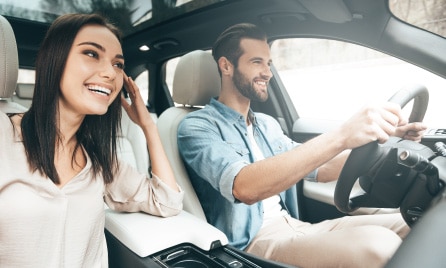
Transmission effectiveness.
If the used car has a manual transmission then look out for smooth, precise gear changes and clutch action. For an automatic vehicle take note of the upshifts and downshifts between auto gear changes. Ideally, there shouldn’t be abrupt jolts or swaying.
Drive quality.
If possible, it’s a good idea to also drive on different roads to see how the car responds on various surfaces. Dirt roads, gravel roads, winding roads, city streets, and freeways are some examples of different surface roads. Take note of any sounds or vibrations you may experience.
Engine power.
Power is important to many car owners, but it’s not just about having the most powerful vehicle. Sometimes a car is too powerful and doesn’t suit your needs. If a car doesn’t accelerate as fast as you want it to, or if it goes too fast at a light touch of the pedal, if it makes you feel uneasy in any way, it may be worth looking elsewhere. It is also worth noting that depending on the engine size, things like air conditioning can affect the power, so it’s a good idea to switch on the air-con while driving to see if you notice any changes in engine power.
Handling.
Good handling should mean a stable ride. The steering wheel should not be jerky or sensitive and there shouldn’t be a lag when turning or adjusting the wheel.
Braking.
Braking is undoubtedly one of the most important aspects of driving, if your brakes are squeaking, are too strong, or too weak they may have to be replaced. Do not be concerned or put off by the idea of having to get some parts fixed. Buying a used car can mean replacing certain components, and sometimes the costs involved might be worth it.
Related articles.
This article provides general information only. The Hollard Insurance Company Pty Ltd does not accept any responsibility or liability for any loss in connection with reliance on this article. You should seek independent professional advice in relation to buying a car.
